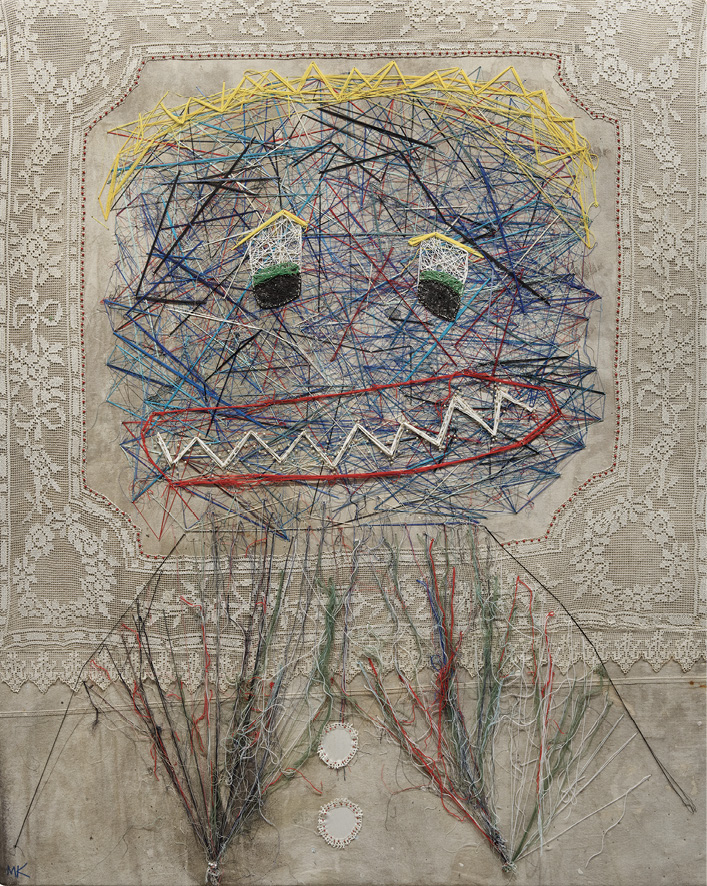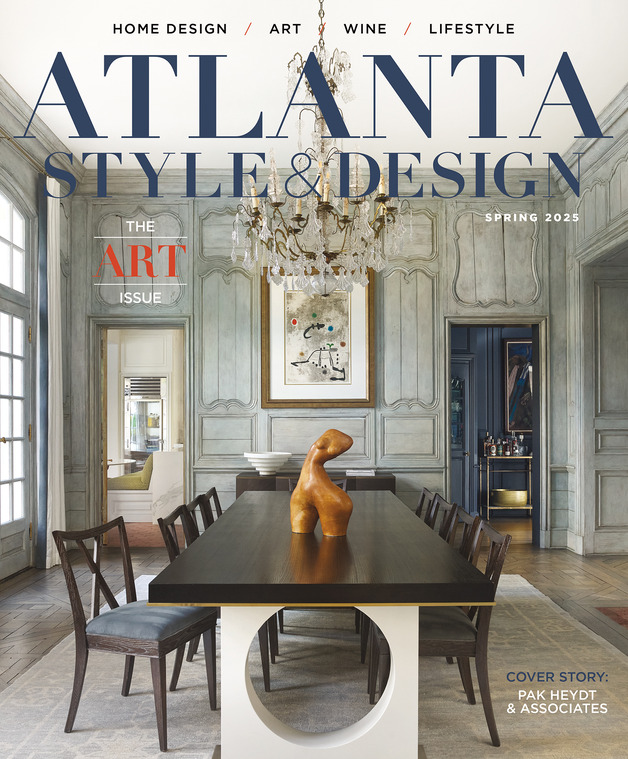
When you’ve been dubbed a “resource for keeping up on contemporary art … celebrating all those who make a contribution to the scene … and always show what is new and what is shaping the creative world,” that’s an achievement. That’s how The Atlantan magazine described Marcia Wood Gallery in its 2023 issue naming the best galleries and museums in Atlanta. Founder Marcia Wood has single-handedly crafted a highly respected reputation over the 40 years since debuting her gallery in 1985, attracting artists and the attention of collectors nationwide. Built on her aesthetic and approach to assessing artists, her method supports both the artist and the gallery’s vision.
“The individual artist is important; they’re not just a producer of a commodity,” explains Wood. “They are uniquely gifted humans who work very hard and are completely committed to their work and deserve to be respected, valued and compensated. I see this as a team—working together to tell their stories.”
An artist’s genre may be influenced by classic or modern art, may be representational or abstraction; for Wood the critical elements of the overall program are a powerful individual vision, a mastery of craft and a depth of content. “I’m fascinated by work that really stimulates your brain, of course,” Wood says. “And work that’s open to interpretation—where everybody sees something different. I love that work. To me, that’s incredibly dynamic. It’s what makes me excited about the art I show and therefore informs the artists I work with.”
A student of art herself, Wood showed talent at an early age and followed her affinity for art through high school and college, studying studio art and art history first at Indiana University and then at Georgia State before her interests turned to sociology and anthropology. “Having had that experience gives me a deep appreciation of what the artists are striving for, and their commitment to their lifelong career,” she says. “I understand how hard it is not only to be a great artist but also to be a vulnerable human and yet stay with it. And I have the privilege to see work develop too, over the years, which is very satisfying.”
Wood’s affinity for art and the people who create it would manifest in an entrepreneurial endeavor. “I was incredibly lucky to have realized early on that this was my tribe, my community, where I fit and had something to contribute,” she says. “I was happy interacting in the art world, so I eventually opened my own gallery, thinking, I know how artists work and at the same time, I can look at it from the perspective of a person who doesn’t have that innate sense and try to connect the two.”
Wood’s aesthetic developed over the years based around her appreciation for contemporary art. “The artists I support are doing work that’s very unique to them,” she explains. “They’re creating their own signature method or process or style. I respond to artists who have developed and mastered processes that are singular to them and that make meaningful contributions to the ongoing dialogue in contemporary art.”
She points to artists who are recognized for their achievements internationally and nationally, such as the married German duo of Venske and Spänle, who are based in Munich and show their marble sculptures all over the world. The works are ambiguously conceptual, blending classical and contemporary influences.
Robert Sagerman’s nonrepresentational oil paintings are composed of thousands of marks made with a palette knife. Wood considers them color field paintings as well as color field sculptures. The final number of strokes becomes the painting’s title as the artist documents each stroke.
Mary Engel has been with the gallery for 35 years and is highly regarded for her powerful pieces of animals created with found objects over exquisitely sculpted figures. Her lifelong love and respect for animals and the connection she feels with them is at the heart of her artistic expression. For the last decade, she has focused on representing endangered and extinct species to speak to the danger they are in as well as to honor and celebrate their beauty and presence.
Steven Charles creates viscerally explosive paintings composed of hundreds of layers of mixed media. The accomplishment of his paintings, more sensed than seen, is an extraordinary quality of time and space. His vivid, dense and constantly shifting surfaces are thrillingly hard to focus on, creating a sense that everything that is happening before your eyes is not actually in the present moment.
Andrea Clark’s three-dimensional work emerges from a continuous experimentation with ceramics, encompassing both sculpture and imagery. The porcelain-based, dream-like imagery intertwines with elements inspired by the Southern landscape.
Scott Eakin’s painstaking geometric paintings on wood present multiple perspectives to discover. The placement of the larger geometries creates space that shifts from foreground to background and the brilliantly colored, countless individual stripes offer the interpretation of an infinity of tiny, imagined landscapes.
To further emphasize the artists behind the artwork, the Marcia Wood Gallery website offers an innovative page that spotlights gallery artists through video presentations, titled “Artist Talks.” It is a creative and engaging platform for the artists to speak in their own words about their work and ideas.
Wood says she’s very active in the art community, reading and researching, attending fairs and reviewing online marketplaces like Artsy and Artnet, always keeping an eye out for exciting artists to discover and support. “There’s so much content out there to look at,” she says. “We have a lot of talent in Atlanta, a lot of young artists who bring a certain energy. I know what I’m looking for—my process is pretty intuitive. I always consider the current program to keep the conversation between all the artists interesting. You won’t find any one artist I support whose style resembles another artist. They may be employing geometric images, staining canvases; they may be painting in the Hudson River School style, yet they’re bringing something to the overall conversation of the program which makes them stand out from each other. It also creates layers in the conversation—they really appreciate being in an aesthetic like that. And the public understands that. People choose galleries that speak to them.”
Looking back on her years in the gallery, Wood cites the major changes technology has brought to the art field and its impact on the way she works. “The internet came along and opened everything up, which was great,” she says. “There’s more information and more access to art. It’s affected the way people are looking at art. It’s changed for me, and it’s exciting. It’s part of what being human is, and what artists respond to—and they’re always on the leading edge of change.” *
Wendy Swat Snyder is a Charleston-based freelance writer (sweetgrassandgrits.com).






